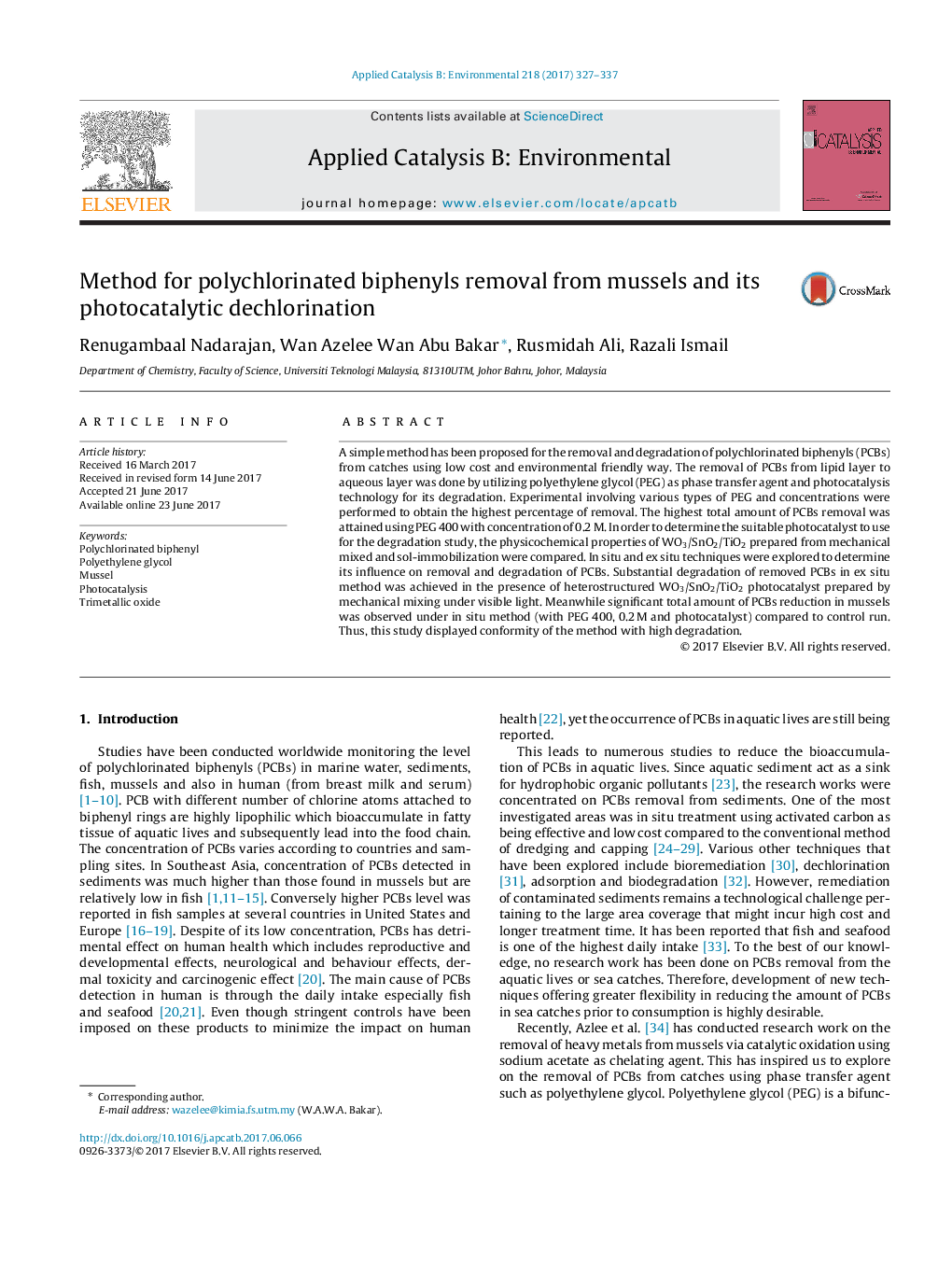| Article ID | Journal | Published Year | Pages | File Type |
|---|---|---|---|---|
| 6453749 | Applied Catalysis B: Environmental | 2017 | 11 Pages |
â¢Real time application of photocatalysis technology for the removal and degradation of PCBs from green mussels (Perna virdis).â¢A simple and novel method for removal of PCBs from green mussels (Perna virdis) using PEG 400 as the phase transfer agent.â¢Utilization of two different techniques by in-situ photodegradation and photodegradation of the removed PCBs.â¢High degradation obtained by using WO3/SnO2/TiO2 photocatalyst under visible light.
A simple method has been proposed for the removal and degradation of polychlorinated biphenyls (PCBs) from catches using low cost and environmental friendly way. The removal of PCBs from lipid layer to aqueous layer was done by utilizing polyethylene glycol (PEG) as phase transfer agent and photocatalysis technology for its degradation. Experimental involving various types of PEG and concentrations were performed to obtain the highest percentage of removal. The highest total amount of PCBs removal was attained using PEG 400 with concentration of 0.2Â M. In order to determine the suitable photocatalyst to use for the degradation study, the physicochemical properties of WO3/SnO2/TiO2 prepared from mechanical mixed and sol-immobilization were compared. In situ and ex situ techniques were explored to determine its influence on removal and degradation of PCBs. Substantial degradation of removed PCBs in ex situ method was achieved in the presence of heterostructured WO3/SnO2/TiO2 photocatalyst prepared by mechanical mixing under visible light. Meanwhile significant total amount of PCBs reduction in mussels was observed under in situ method (with PEG 400, 0.2Â M and photocatalyst) compared to control run. Thus, this study displayed conformity of the method with high degradation.
Graphical abstractDownload high-res image (184KB)Download full-size image
